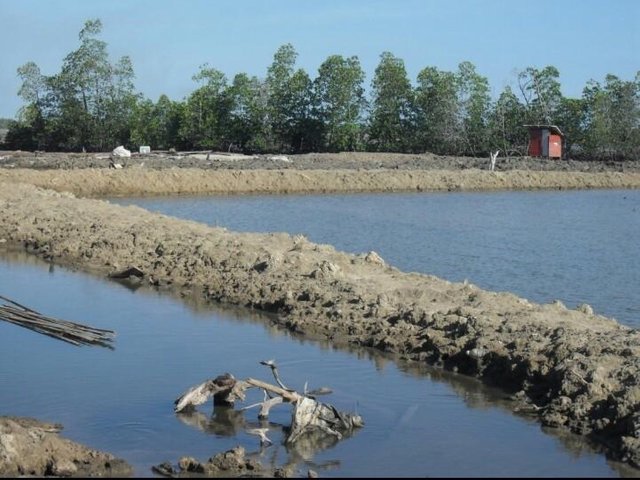
In semi intensive shrimp cultivation, cultivation system applied should use recirculation system with ratio of pond area 40%: 60% between plot of tandon with maintenance plot.
The construction of ponds, especially dikes must be strong, waterproof (not seeped and leaking), not easily landslides, separate entrances and exits, caren form across the pond bottom.
quarantine pond plot that serves as a plot of water insulation media, either new water or old water (water recirculation)
Water supply lines that accommodate water with standard water quality standards, which are distributed to the enlargement plots.
Plot enlargement is used as a plot of shrimp maintenance to harvest.
The drainage channel from the magnification plot serves as a sludge / waste deposition channel.
Biodegradable biodegradable pond plots maintained by multispeies and fish (bioscreen / biofilter) organisms to prey on shrimp disease
The plot of waste treatment unit serves as a plot of wastewater storage. Shrimp (waste) of shrimp, especially waste water ponds.
The basic elevation of shrimp aquifer ponds to the lowest tidal swiddens) is ideal and ideal for water management and mud / sewage disposal, either daily or under certain conditions.
Central drain; is a drainage system made / placed at the point of concentration of dirt collection, ie in the middle of the shrimp enlargement plot.
Monic door; is a model of drainage doors made of masonry and cast stones. The regulating door is on the inner side bund, while the drain concrete buis faces the drain.
embankment and pond bottom; The ideal bundle dimensions (made from soil) for shrimp farms are wide between 2.5 - 3.5 m, bottom width between 7.0-9.0 m and height between 1.5 - 2.0 m, the slope / slope 45 - 60 degrees.